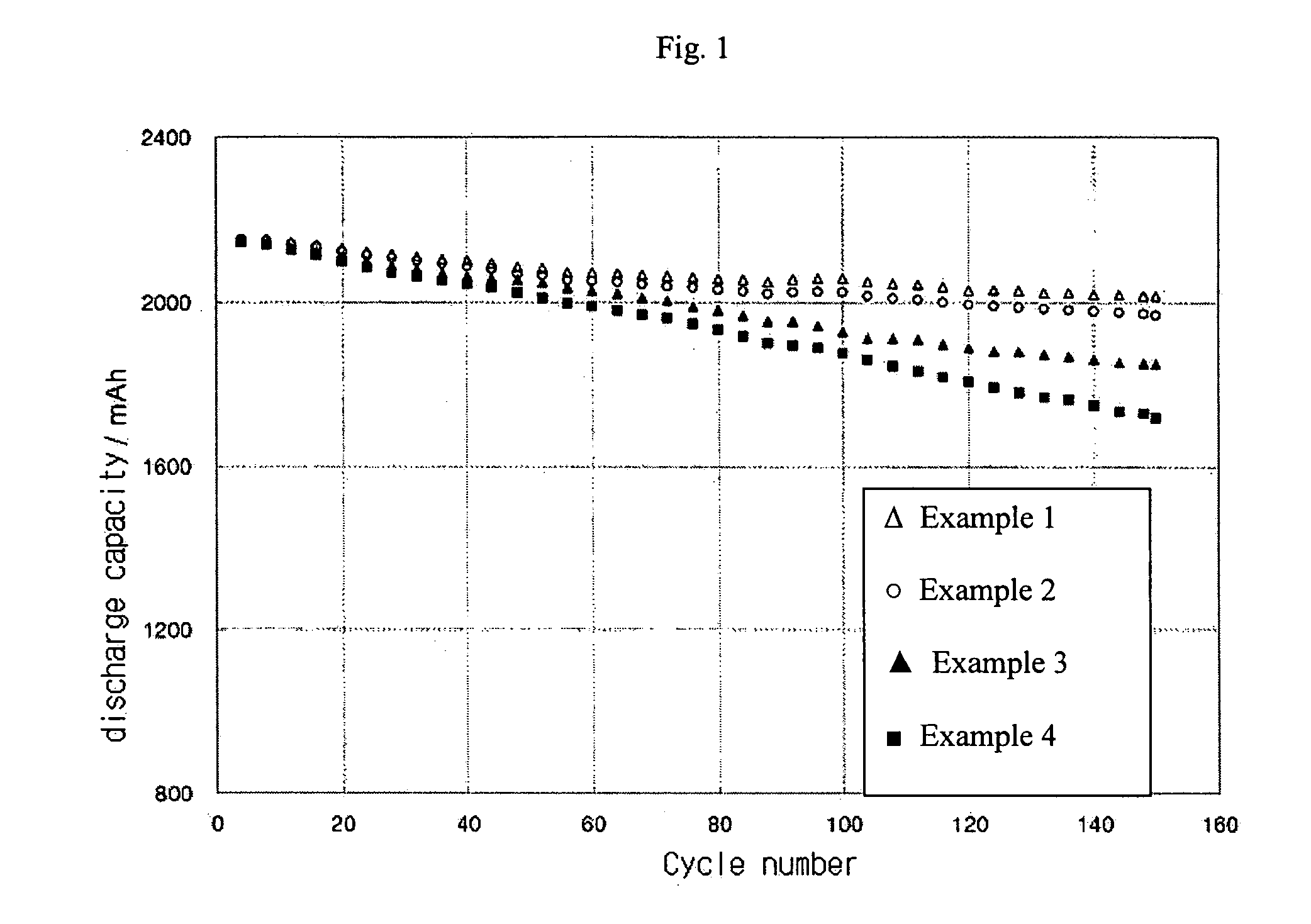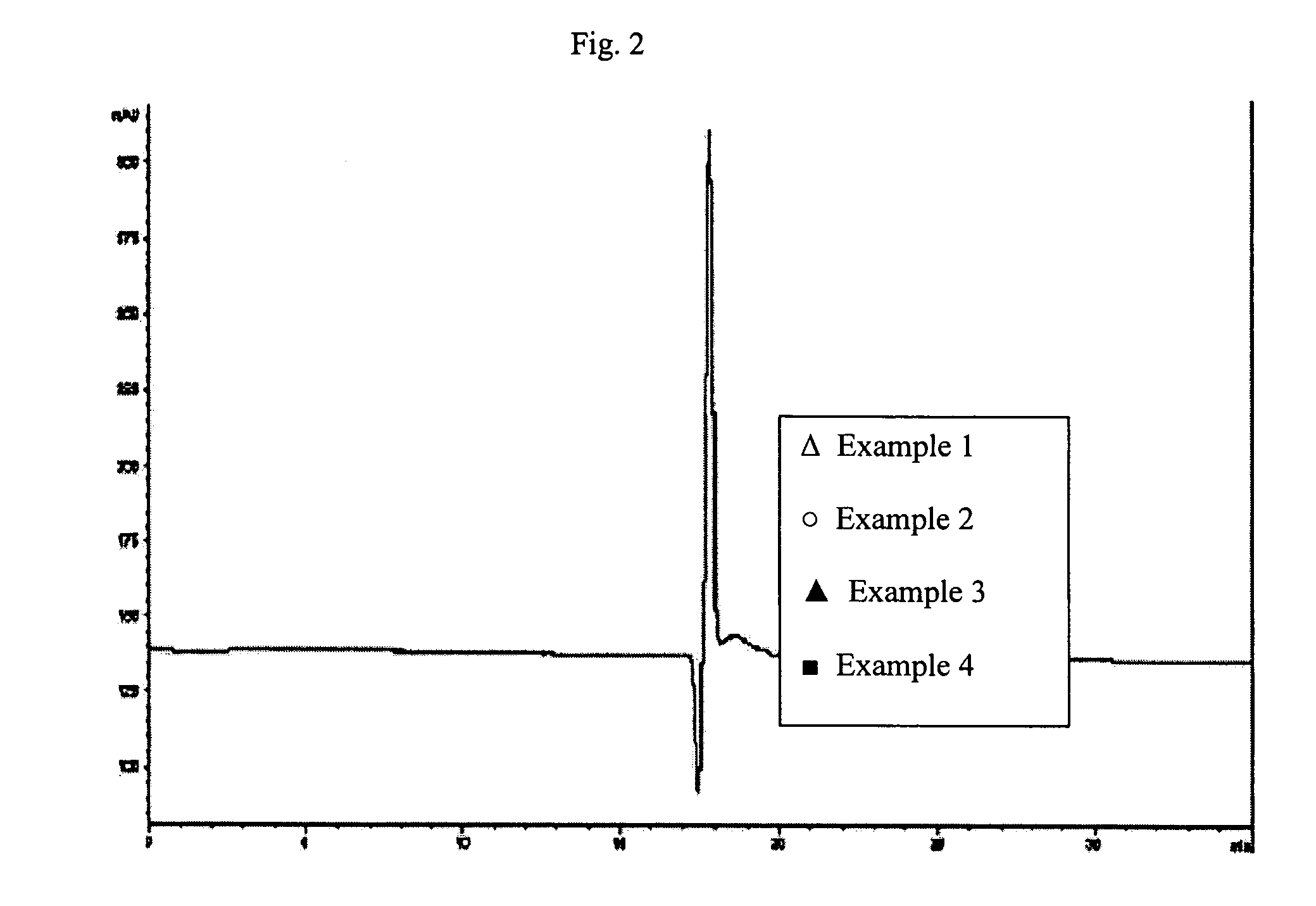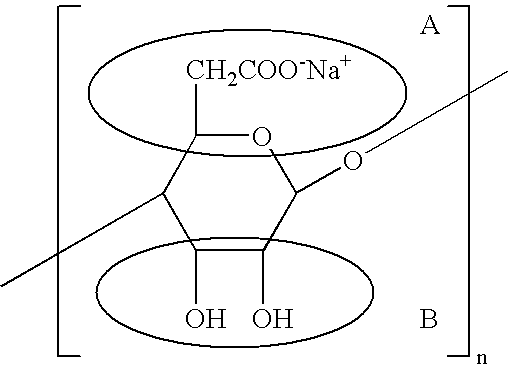Carboxymethyl cellulose-based binder material and lithium battery using the same
a carboxymethylcellulose and lithium battery technology, applied in the direction of cell components, electrochemical generators, adhesive types, etc., can solve the problems of reducing charge/discharge efficiency, internal short circuits, and repeated dissolution of lithium, so as to improve water solubility, improve dispersibility, and strong adhesive force
- Summary
- Abstract
- Description
- Claims
- Application Information
AI Technical Summary
Benefits of technology
Problems solved by technology
Method used
Image
Examples
specific example 1
The following example provides a method for manufacturing a lithium battery of the present invention. 96% by weight of LiCoO2, 2% by weight of polyvinylidenefluoride (PVDF) as a binder, and 2% by weight of a carbon conductor were mixed. The carbon conductor may enhance the mobility of electrons. The mixture was place in a plastic bottle with N-methylpyrrolidone(NMP) and ceramic balls, and then mixed for about 10 hours. The resultant mixture was cast onto a 15 μm-thick aluminum foil using 250 μm-spaced doctor blade, placed in an oven at about 110 μm, and then dried for about 12 hours to completely ablate the NMP. The resultant product was roll-pressed, and cut to a predetermined size to obtain a cathode plate having a thickness of 95 μm.
97% by weight of graphite power, 1.5% by weight of styrene butadiene rubber (SBR) as a binder and 1.5% by weight of carboxymethyl cellulose sodium salt were each weighed. First, a carboxymethyl cellulose sodium salt was dissolved in distilled water...
specific example 2
A carboxymethyl cellulose sodium salt was used as a binder. In this example, the carboxymethyl cellulose sodium salt has 11.3% of unsubstituted glucose units following hydrolysis. The carboxymethyl cellulose sodium salt was hydrolyzed according to the following process and the concentration of glucose was measured by chromatography.
0.1 g of carboxymethyl cellulose sodium salt was added into 2 ml of perchloric acid (70%) and then dispersed for 10 minutes. Then, 18 ml of distilled water was added thereto, and then refluxed for 16 hours. After the reaction was completed, the resultant solution was cooled in an ice bath. Then, the cooled solution was neutralized using 2 M KOH. When the neutralized solution became a neutral or a weak alkali, which was identified using a pH paper, KClO4, which was crystallized after one-hour ice bath, was removed using a filter. Distilled water was added thereto until the volume of the solution was 50 ml, and evaporated under a vacuum condition until t...
specific example 3
A carboxymethyl cellulose sodium salt resulting in 11.4% of unsubstituted glucose units following hydrolysis was produced. The binder was hydrolyzed in the same manner as in Example 2.
PUM
| Property | Measurement | Unit |
|---|---|---|
| thickness | aaaaa | aaaaa |
| thickness | aaaaa | aaaaa |
| thickness | aaaaa | aaaaa |
Abstract
Description
Claims
Application Information
 Login to View More
Login to View More - R&D
- Intellectual Property
- Life Sciences
- Materials
- Tech Scout
- Unparalleled Data Quality
- Higher Quality Content
- 60% Fewer Hallucinations
Browse by: Latest US Patents, China's latest patents, Technical Efficacy Thesaurus, Application Domain, Technology Topic, Popular Technical Reports.
© 2025 PatSnap. All rights reserved.Legal|Privacy policy|Modern Slavery Act Transparency Statement|Sitemap|About US| Contact US: help@patsnap.com



